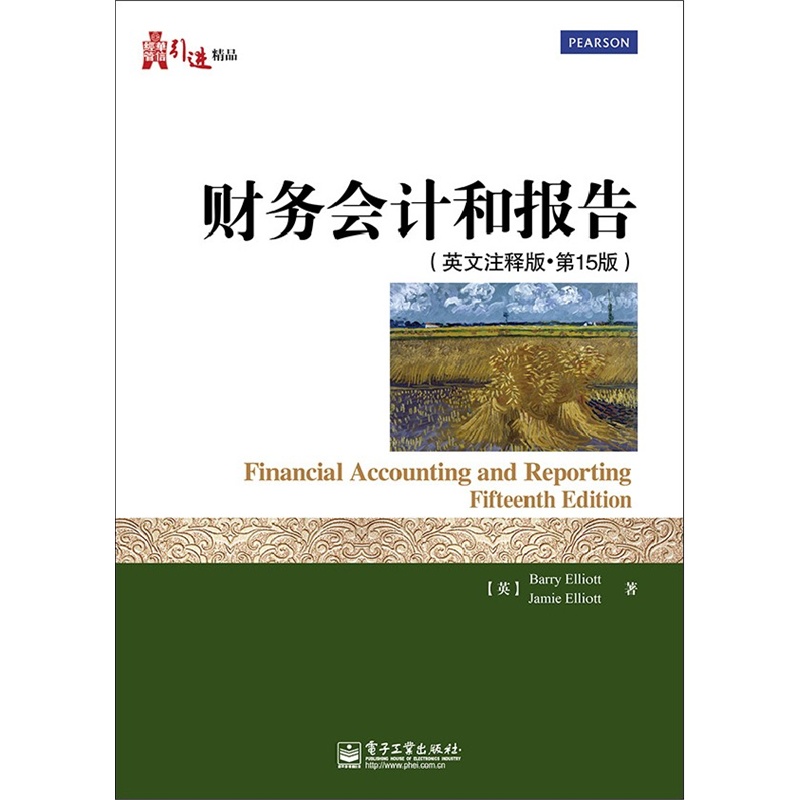 [内容简介]
[内容简介]
本书旨在向读者呈现一个全面的会计准则体系及财务报告框架,以确保学生能够获得必要的会计学知识和技能。 学生在对会计理论知识深入学习后不仅可以对当前的会计制度进行批判性的评价,还可以从基础理论的角度评估诸多改进性意见。本书主要包括:现行的国际会计准 则(ISA)和国际财务报告准则(IFRS);公开报告中截选的会计案例;提纲挈领的复习题;不同难度的练习题;丰富的参考文献。
[目录]
Part 1 Preparation of financial statements Chapter 1 Accounting and reporting on a cash flow basis
1.1 Introduction
1.2 Shareholders
1.3 What skills does an accountant require in respect of external reports?
1.4 Managers
1.5 What skills does an accountant require in respect of internal reports?
1.6 Procedural steps when reporting to internal users
1.7 Agency costs2
1.8 Illustration of periodic financial statements prepared under the cash flow concept to disclose realised operating cash flows
1.9 Illustration of preparation of statement of financial position
1.10 Treatment of noncurrent assets in the cash flow model
1.11 What are the characteristics of these data that make them reliable?
1.12 Reports to external users
Summary
Review questions
References
Chapter 2 Accounting and reporting on an accrual accounting basis
2.1 Introduction
2.2 Historical cost convention
2.3 Accrual basis of accounting
2.4 Mechanics of accrual accounting
adjusting cash receipts and payments
2.5 Subjective judgements required in accrual accountingadjusting cash payments in accordance with the matching principle
2.6 Mechanics of accrual accountingthe statement of financial position
2.7 Reformatting the statement of financial position
2.8 Accounting for the sacrifice of noncurrent assets
2.9 Reconciliation of cash flow and accrual accounting data
Summary
Review questions
References
Chapter 3 Preparation of financial statements
3.1 Introduction
3.2 Preparing an internal statement of income from a trial balance
3.3 The format of statements of income for publication
3.4 Other comprehensive income
3.5 Accounting for current tax
3.6 Presentation using IAS 1 Alternative method (Format 2)
3.7 The statement of financial position
3.8 Statement of changes in equity
3.9 The accounting rules for asset valuation
3.10 The explanatory notes that accompany a statement of financial position
3.11 Has prescribing the formats meant that identical transactions are reported identically?
3.12 What does an investor need in addition to the financial statements to make decisions?
3.13 ASB review of narrative reporting
3.14 What is meant by a fair view?
Summary
Review questions
References
Chapter 4 Annual Report: additional financial statements
4.1 Introduction
4.2 The value added by segment reports
4.3 Detailed review and evaluation of
IRFS 8Operating Segments1
4.4 IFRS 5meaning of 'held for sale'
4.5 IFRS 5implications of classification as held for sale
4.6 Meaning and disclosure of 'discontinued operations'
4.7 IAS 10events after the reporting period4
4.8 Related party disclosures
Summary
Review questions
References
Chapter 5 Statements of cash flows
5.1 Introduction
5.2 Development of statements of cash flows
5.3 Applying IAS 7 (revised) Statements of Cash Flows
5.4 Step approach to preparation of a statement of cash flowsindirect method
5.5 Statement of cash flowsdirect method
5.6 Additional notes required by IAS 7
5.7 Analysing statements of cash flows
5.8 Critique of cash flow accounting
5.9 Summary proposal for change in
presentation of the financial statements
Summary
Review questions
References
Part 2 Income and asset value measurement systems Chapter 6 Income and asset value measurement: an economist's approach
6.1 Introduction
6.2 Role and objective of income measurement
6.3 Accountant's view of income, capital and value
6.4 Critical comment on the accountant's measure
6.5 Economist's view of income, capital and value
6.6 Critical comment on the economist's measure
6.7 Income, capital and changing price levels
Summary
Review questions
References
Bibliography
Chapter 7 Accounting for pricelevel changes
7.1 Introduction
7.2 Review of the problems of historical cost accounting (HCA)
……

 新书报道
新书报道